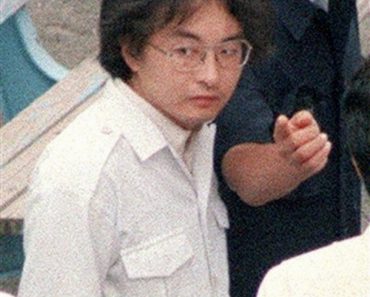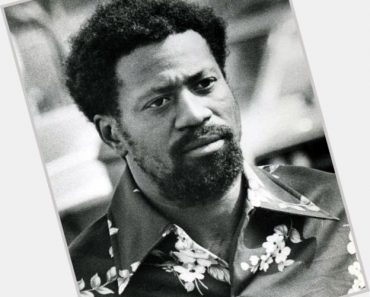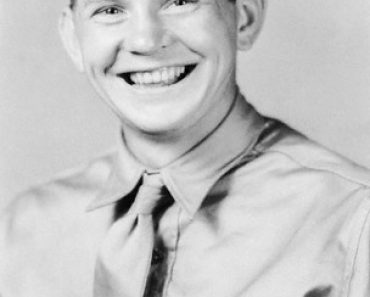Michel Fourniret | French Serial Killer
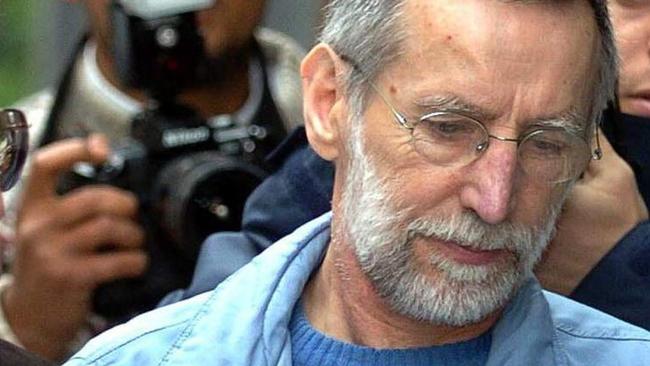
Michel Fourniret
Born: 04-04-1942
The Ogre of the Ardennes
A French Serial Kiler
Crime Spree: 1987 – 2001
Death: 05-10-2021
Michel Fourniret is a French serial killer who confessed, in June and July 2004, to kidnapping, raping and murdering 9 girls in the span of 14 years during the 1980’s and the 1990’s. He is also suspected of 10 additional murders, 9 in France and 1 in Belgium. Fourniret buried at least two of his victims at his Sautou chateau in the late 1980’s. On 3 July 2004, a team of French and Belgian police recovered the bodies of two of Fourniret’s victims near the castle. Michel Fourniret was sentenced to life in prison on May 28, 2008. The Ogress received the same.
Michel Fourniret was born in 1942 in Sedan, France. His father was a metal worker and his mother was a stay at home wife. Michel was a quiet child who entertained himself with chess and classical music.
Throughout young adulthood, however Michel Fourniret found it difficult to hold down a job. He tried forestry worker and being a school supervisor but neither of these stuck. Neither did his first two marriages. His mind was preoccupied with other interests.
Michel’s first arrest came in 1966 for child molestation. It ended his first marriage. He married a second time and fathered three children before again being arrested for the rape and indecent assault of minors. Marriage two went down the drain.
While he was incarcerated, Michel placed an ad in a magazine seeking a pen-pal. A nurse and mother of three answered his call. Her name was Monique Olivier. Through the course of their correspondences, a deal of sorts was made. Olivier, now privy to those things which occupied Michel’s mind, agreed to help him ‘hunt virgins’ if he would help her kill her former husbands. Michel, who Monique now called her ‘Beast’, readily agreed.
Fourniret was released early, due to his ‘model prisoner’ status, and, true to her word, Monique Olivier was waiting at the prison gates when he walked out free on October 26,1987.
Two months later, the killing spree began.
Michel Fourniret and his bride, Monique Olivier, would spent their time cruising for ‘virgins’ to kidnap. It was that thing that constantly occupied Michel’s mind.
Once the victim had been lured into their snare, it was up to Olivier to ‘physically’ inspect the young woman to ensure her ‘innocence’ prior to Fourniret raping and murdering her.
It was a responsibility Monique would dutifully tend to for years.
First Offering To Her Beast
The couple spotted Isabelle Laville, a shy 17-year-old, at 4:45 pm on December 11, in 1987. Olivier later stated that their first ‘virgin’ reminded her of a younger version of herself and it’s why she selected her. Michel wanted to imagine that he was taking Monique’s virginity and Isabelle would prove to be the perfect stand in.
Monique Olivier moved the car slowly down the street, coming up along side of Isabelle Laville, who was on her way home from school. Monique explained she was lost and in need of directions. She persuaded the girl into the car to help her get where she needed to be quickly. The young lady complied.
Fourniret was already waiting down the road a bit with an empty gas can, posing as a stranded motorist whom Olivier, of course, stopped to pick up. Michel slipped into the backseat behind the passenger. The car moved forward.
Once inside the car, Fourniret swung a rope around Laville’s neck, jerking her hard back against the seat. It was then that he told her she was a prisoner. She was force fed an overdose of sleeping pills as Olivier turned the car toward home.
When they got to the house, Monique performed oral sex on Fourniret when it became obvious he was unable to rape the victim. Afterward, Fourniret strangled Isabelle. He dumped her body in an unused well.
A year later, in 1988, Monique Olivier was pregnant and more than was willing to use her state as a ruse. She approached Fabienne Leroy, a 20-year-old student, in a grocery store parking lot, telling her that she urgently needed to get to a doctor. Leroy was more than willing to help and climbed into the car. Michel Fourniret was behind the wheel.
Michel drove to a field and pulled Leroy out of the car at gunpoint. Olivier quickly performed her ‘duty’ and, after confirming the young girl’s virginity, turned the subject over to her Beast.
Fourniret raped her. He then shot her in the chest, leaving her lay in the field where he had taken her innocence and her life. Her body was found in the field the next day.
More murders would follow the same pattern.
Life Goes On
Michel Fourniret and Monique Olivier married. They bought a chateau on a border region between France and Belgium. It was suggested that Fourniret stole the money from a cellmates wife then murdered her.
The Fourniret’s also had their first child together that same year.
In 1989, the couple claimed their youngest victim. 12 year old Elisabeth Brichet was abducted from the town of Namur. Her body was discovered 14 years later on the grounds of the chateau.
With their baby boy, along for the ride, Fourniret and Olivier would use any number of ruses to gain their desired victim. The most popular being the need for directions. Monique would pick up a girl, who would graciously agree to help her with directions, but as they moved along, they would see Fourniret waving an empty gas can and Olivier would stop to pick him up. From there things would only get ugly.
Fourniret would then rape his victim, with Monique watching close by. He would then strangle or shoot the young girl. But that would not constitute the end of the ordeal. Fourniret would attack the corpse and then once again rape the dead body. All the while, Olivier was paying close attention so she would know her part well when relived the event through their sex life.
Fourniret would either dispose of the bodies on his grounds or the surrounding area.
The One That Got Away
Monique Olivier did not always accompany her husband on his almost daily expeditions. He would however always share tales of his adventures stating how, when and where he had ‘ obtained’ his ‘satisfaction’. In 2003, however, Michel Fourniret, out on a solo expedition, made the mistake of letting one get away.
While out on one of those solo journey’s, Michel Fourniret kidnapped a 13-year-old girl from Belgium. She managed to escape her bonds by chewing through the ropes that held her captive. When the van slowed at a traffic sign, she quickly leaped from the rear of the vehicle. A female driver saw everything and quickly collected the girl into her car, taking her straight to the hospital. But not before she got the license plate number of the white van.
The beginning of the end was at hand.
Fourniret and his wife were arrested shortly thereafter.
Confessed Murders
- Isabelle Laville – a 17-year old French girl. She disappeared in Auxerre, France, on her way from school to home.
- Fabienne Leroy – a 20-year old girl. She disappeared in 1988 in Mourmelon, and her body was later found in the nearby woods.
- Jeanne-Marie Desramault – a 22-year old French student. She disappeared in 1989 from the railway station of Charleville-Méziere, and her body was recovered from the estate of Fourniret with his assistance.
- Elisabeth Brichet – a 12-year-old Belgian girl. She disappeared from Namur in 1989 after playing with a friend. This case has been long thought to be linked to the Dutroux case. Fourniret led police to her burial site on his estate in France.
- Natacha Danais – a 13-year old French girl, disappeared in 1990.
- Farida Hellegouarch – the girlfriend of one of the leaders of Action Directe, a former cellmate of Fourniret’s. Fourniret killed her in 1990 to access the group’s funds. He bought his castle in France with the money.
- Céline Saison – 18-year old who disappeared in 2000 in Sedan, and her body was found in Belgium.
- Manyana Thumpong – 18-year old who disappeared in 2001 from Charleville-Méziere. Her body was also later found in Belgium.
- An unidentified man – Fourniret killed this man in a robbery for some quick cash.
Fourniret’s wife has also said that Fourniret killed a 16-year old girl who had worked as a au pair at their house. Fourniret allegedly killed her in 1993, but has not confessed. Her identity has not been discovered.
Other Crimes
Michel Fourniret himself says he did not commit any crimes between 1990 and 2000. Police in at least five countries (France, Belgium, the Netherlands, Germany and Denmark) have taken a fresh look at old rapes, disappearances and murders, however. In Denmark, police noticed that a police sketch of a rape suspect looked a lot like Fourniret. In the Netherlands, investigators in the disappearances of Tanja Groen and Nicky Verstappen have investigated Fourniret.
In 2006 rumors started that Fourniret might have been the real suspect in the case Christian Ranucci. 22 year old Ranucci was beheaded in France with the guillotine on 28 July 1976 under the suspicion that he killed an eight year old girl; Marie-Dolores Rambla. The case has always been controversial.
The Ogress
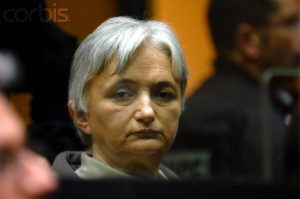
His French housewife, Monique Olivier, helped her husband, Michel Fourniret, in a 20-year orgy of kidnap, rape, torture and murder.
Early afternoon, February 14, 2005, Monique Olivier sat bowed, as if helpless, in the interrogation room of police headquarters in the town of Dinant, southern Belgium. The plump and dowdy 56-year-old adopted the pose for hours, refusing food and drinks.
Surrounding her were two French detectives and a provincial public prosecutor. They had crossed the nearby border early that Valentine’s Day morning to question her, hoping she would add to the list of abductions, rapes and murders across France to which she and her husband, Michel Fourniret, had already confessed.
While the winter afternoon darkened, her inquisitors lost patience with Olivier’s continuing silence; voices were raised, tempers frayed. Olivier later claimed the prosecutor, Francis Nachbar, slapped her, and that one of the detectives elbowed her in the chest. Belgian officials dismissed the incident as nothing more than some “mild shoving” and a later inquiry cleared both men of misconduct. Whatever happened, Olivier offered further revelations, her first in seven months. She began with the 1988 murder of a girl she did not name close to the Burgundy village in which she and her husband once lived. She described the victim, how Fourniret had stalked her for weeks, how she herself had helped him lull the girl into their car, and how he alone had disposed of the body at night.
Michel Fourniret
Her account appeared to match the disappearance in 1988 of 19-year-old Marie-Angèle Domece. It was not until Monique began her second confession of the day – relating to another killing in Burgundy, this time in 1990 – that Nachbar knew he had won the day. “I would like to tell you about another case, one that you do not know about, and which ended with the death of a young girl,” she began. With every word then uttered, the investigators heard her reveal the mystery of who raped and strangled the 20-year-old British student teacher Joanna Parrish. It was a coup for the French team; it seemed they had cracked one of the longest-running murder cases still open in France, an investigation so badly bungled it had become a diplomatic embarrassment for the French authorities. It was even the object of an internal justice-ministry inquiry into a possible cover-up. Joanna had disappeared from the centre of the ancient town of Auxerre during the early evening of May 16, 1990. Her naked body was found the next morning, floating in a river five miles from the town.
No witnesses to the crime were ever found, and the only indication of what she endured came as a result of a postmortem. Monique Olivier’s account of the injuries inflicted on a victim she again did not name was matched by the unpublished conclusions of the postmortem report. She told of how they had abducted their victim in Auxerre during the evening rush hour, a tactic Michel Fourniret favored because of the anonymity it afforded; how she herself drove their van out towards an isolated spot in nearby countryside while her husband beat their captive “until she spoke no more” and how, when it was all over, he finally disposed of the undressed corpse “in a watercourse” nearby. Confronted with his wife’s statement the next day, Fourniret denied murdering either Joanna or Marie-Angèle. But he had previously denied committing other murders detailed by Olivier before finally admitting them. An upbeat Nachbar traveled the 40 miles back to France and called a press conference to announce the important “credibility” of Olivier’s “very detailed” account of the murder of Joanna Parrish. But the euphoria was to be short-lived.
Michel Fourniret Flees
Michel Fourniret, now 65, and Monique Olivier fled from France to the village of Sart-Custinne in the Ardennes in 1991, where they bought a farmhouse and raised their son, Sélim, born in 1988. The quiet, polite couple lived there without suspicion, even briefly finding work in the local primary school as playground and canteen supervisors.
On June 26, 2003, a Belgian police van pulled up outside their dark stone-walled house at the edge of the village, bringing to an end the activities of a man who many believe is one of France’s most prolific serial killers. Michel Fourniret was arrested for the kidnap of a 13-year-old girl in the nearby town of Ciney, who earlier that afternoon had managed to escape from his van. Marie-Ascension – whose surname was withheld for legal reasons – was rescued by a passing woman motorist who had taken down Fourniret’s registration number. Belgian police applied to the French for his criminal record, but none was found even though Michel Fourniret had been convicted in France for separate crimes of pedophilia, exhibitionism and serious sex assaults.
But the Belgians were suspicious of the short, bespectacled, well-spoken Frenchman who had installed an elaborate door-locking system in his Citröen van. They re-examined dozens of unsolved sex crimes in Belgium as well as France, notably the murder on May 16, 2000, of 18-year-old Céline Saison (a decade to the day after Joanna Parrish’s murder), and on May 5, 2001, of 13-year-old Mananya Thumpong, who both disappeared close to their homes in the French Ardennes and whose remains were found dumped and rotting in forests just across the border in Belgium. By June 2004, Belgian police had sent human hairs found in Fourniret’s van for DNA analysis in France.
One sample, they suspected, belonged to Thumpong. They believe that was why Monique Olivier, frequently questioned about Michel Fourniret and whose lawyer was informed of the move, decided the game was up. On June 28 she agreed to give a statement, one that was to stun the Belgians.
The Ogress Speaks
“My husband has murdered at least six women,” she declared. The murders began in 1987. She included anecdotes, such as how on the night he allegedly murdered Céline Saison alone, he came home to tell her: “I went hunting today, and I obtained satisfaction.” That first statement was followed by others, revealing two more murders. Confronted with the statements, Michel Fourniret was to confirm and eventually add to them. He initially admitted only the earliest murders, potentially covered by France’s crime-prescriptions law; this states that nobody can be charged for a murder if the investigation has been formally closed for more than 10 years.
This was later overruled as non-applicable to serial killings. He even swore on the head of his grandchildren that he did not commit the more recent crimes, before finally giving way. In a ping-pong trail of statements, their corroborating accounts provided irrefutable evidence of their involvement in the crimes; Michel Fourniret later led police to the bodies that had never been found, directing earth-diggers like an enthusiastic work foreman to within inches of the secret burial spots in the tree-lined park of their former home, a chateau in the Ardennes. The pair agreed on seven murders in France and one in Belgium, along with miscellaneous crimes including assaults and armed robbery. The Belgian and French investigators remain certain that they have revealed only the tip of an unfathomed iceberg. But in 2005, Belgium agreed to hand them over to France for a trial.
Michel Fourniret Doesn’t Match
“When we got news of Monique Olivier’s statement, it was a very special moment. We felt we were at the beginning of the end of 15 years of trauma and nightmares, lost evidence, interminable bureaucracy, a wild, emotional roller coaster of hope and despair,” explains Joanna’s father, Roger Parrish, 63, a retired land-registry official from Newnham-on-Severn, Gloucestershire.
But less than a month after the confession, the senior French prosecutor Yves Charpenel told the Belgian daily De Morgan that Fourniret’s DNA didn’t match the main piece of evidence – semen found in Joanna’s body during the postmortem. “We were absolutely shattered,” recalls Joanna’s mother, Pauline Sewell, 62. “We knew that until then, Michel Fourniret had confirmed everything his wife accused him of, and it might be just a question of time before he finally admitted to his crime,” adds Parrish. “We also knew that in 1990 he had a house close to Auxerre and above all that he’d confessed, right at the beginning, to the murder of a 17-year-old girl there.
Then there was the presence of Monique Olivier, which for us helped explain why Jo, a prudent, careful young woman, could have got into a vehicle,” says Sewell. “It all seemed to add up. But then we also knew DNA doesn’t lie – or so we thought.” In the absence of any contact from the French authorities, they asked their Paris lawyer for an explanation. It transpired that the DNA profile taken from the stored semen was identified in 1993 using a now obsolete system called HLA-DQ alpha.
The DNA
Fourniret’s DNA was established using the now common SGM+ system, which is incompatible with the former system. While a complete DNA profile established by HLA-DQ alpha cannot be compared with another developed from SGM+, a partial comparison of some DNA information, represented by a series of numbers, is possible – a little like comparing the same corner pieces from two picture puzzles; if there is no identical detail of numbers, it cannot be the same DNA.
When the French first tried this, they decided Michel Fourniret was ruled out. But Joanna’s parents then learned from expert advice that the 1993 DNA result was not only obsolete but also flawed; the supposed “single” DNA in fact contains a mixture of information about both Joanna’s DNA profile and that of her aggressor. Her parents were back on the roller coaster. They turned to Detective Superintendent Bernard Kinsella, head of Gloucestershire Constabulary’s specialist crime operations, who had been assigned as a liaison officer to provide assistance with their case. Kinsella consulted a British DNA scientist, Dr Colin Dark, a specialist adviser for the Forensic Science Service (FSS) experienced in “cold case” reviews.
Dark is an expert in the FSS’s pioneering “low copy number” technique, a unique and super-sensitive method of analysis whereby a DNA profile can be found in evidence containing just a few cells – matter so minute that it is invisible to the naked eye. He considered that by applying DNA LCN to the original slide upon which the sperm sample was examined in 1993, there was a fighting chance of finding traces of semen from which a full SGM+ DNA profile could be produced. With Parrish and Sewell’s help, Kinsella made an inventory of all the other evidence recorded in the French case file, which he hoped was still preserved; this included scratchings from under Joanna’s fingernails and skin from strangulation marks, widening the chances of finding a profile through DNA LCN. The next hurdle was for Kinsella to convince the French into accepting Dr Dark’s assistance.
Handyman Michel Fourniret
A qualified draftsman, who by his early thirties ran his own tool-making business near Paris, Michel Fourniret was an expert handyman whose hobby, DIY, disguised his grave digging.
Michel Fourniret was 24 when he was first convicted, for abducting and abusing a 10-year-old girl in his native town of Sedan in the Ardennes. After two further convictions, he was arrested in 1984 for a series of kidnaps and sex attacks on teenage girls and young women in the Paris region, and placed in preventive detention. That was when Monique Olivier, twice married and with two estranged children, found his small ad in a weekly Catholic magazine appealing for a pen pal.
They began an intense correspondence, discovered in Belgium after their arrests, in which she lovingly addressed him alternately as “My dear Shere Khan” – a reference to the tiger in Kipling’s Jungle Book tales – and “my beast”. They swapped promises of raping virgins, a recurrent theme for Michel Fourniret, who described his prey as “membranes on legs”. In June 1987 he was finally tried for 11 sex assaults and given a prison sentence of seven years, two of them suspended. Having already served three years awaiting trial, and being a model prisoner, he was released early for good conduct four months later.
On October 26 he walked free through the doors of Fleury-Mérogis prison, south of Paris, where Olivier was waiting for him in her green Peugeot estate. They immediately set up home in northern Burgundy, in the village of St Cyr-les-Colons. At 4.45pm on Friday, December 11, six weeks after Fourniret’s release from prison, 17-year-old Isabelle Laville disappeared on her regular 20-minute walk home from school in the Auxerre suburb of St Georges-sur-Baulche. No witnesses were ever found, despite her route following a busy commuter road along which lay two secondary schools spilling out children for the weekend break. Olivier has now explained that Laville was her first offering to her “beast”, chosen because of the long-haired schoolgirl’s supposed resemblance to a younger Olivier as a virgin. Olivier drew up alongside Laville and asked directions, convincing her to get in and show her the way. Michel Fourniret was already waiting further along the road with a jerry can, posing as a stranded motorist whom Olivier then obligingly stopped for.
The Well
Olivier remembers that Michel Fourniret, from the back seat, soon passed a cord around Laville’s neck, and both agree they drugged their captive during the drive back to their house in St Cyr-les-Colons, where Olivier admits stimulating Fourniret with oral sex when he found himself physically unable to rape Laville. It was upon Fourniret’s indications that, in July last year, Laville’s remains were recovered from the bottom of a now disused 30-metre well in countryside north of Auxerre. Michel Fourniret and Olivier said they found the well by accident. “They are liars!” said Alain Behr, the Laville family lawyer.
“They constantly manipulate, playing between truth and lies. The well was within a closed brick transformer building – he could not have known what was in there.” Behr’s point, confirmed by a retired local farmer who told me even he had no idea a well was there, is that Fourniret had prepared the site beforehand. Just 11 miles from the well, on the main road back to Auxerre, lies the village of Monéteau, where Joanna Parrish’s body was discovered.
A third-year languages undergraduate at Leeds University, Joanna was posted as a teaching assistant to the Lycée Jacques Amyot in Auxerre. In early May 1990, two weeks before she was due to return home, the 20-year-old placed three adverts in a local weekly freesheet, Le 89; one was to sell an electric plate, another offered private English tuition, and the other, baby-sitting services. By May 10, a man who has never been identified had called to ask her to give English lessons to his young teenage son. “She mentioned it on the telephone that night,” recalls Silvia Baldassari, a German-language assistant and flatmate of Joanna’s, who had by then returned to Austria. “She said they agreed to meet in the town center.” She and Joanna’s friend, Janet Davis, remember the man said he lived just outside the town.
Davis was with Joanna when she left the lycée on Wednesday, May 16, between 6.30pm and 7pm for her appointment. At 9am the next morning, Joanna’s body, naked except for her jewelry and watch, was found floating face down in the River Yonne at Monéteau, a village five miles north of Auxerre. In March 2006, just over a year after Olivier’s confession of Joanna’s murder, Roger Parrish and Pauline Sewell traveled from their homes in Gloucestershire to the town of Charleville-Mézières in the Ardennes. There they met for the first time with the two French examining magistrates leading the investigations into all the suspected crimes of Michel Fourniret and Monique Olivier, including the murder of Joanna. With them was Bernard Kinsella. Fourniret and Olivier had by then been extradited to France, and the French prosecuting authorities were pressing to bring the pair swiftly to trial for the seven murders on the charge sheet in 2004. But Michel Fourniret still denied murdering either Joanna Parrish or Marie-Angèle Domece, and without his help both cases were stalled. His wife, meanwhile, had by then also accused Fourniret of killing several baby-sitters they employed in the early 1990’s at their home in Sart-Custinne. Belgian investigators say a statement by another baby-sitter employed by the couple there supports Olivier’s story. During the March 30 meeting, the magistrates Pascal Préaubert and Anne Devigne told Roger Parrish and Pauline Sewell that they were convinced that Fourniret and Olivier had murdered their daughter. “It was an awesome moment,” remembers Parrish.
The Marks
“They were absolutely categorical, without any hesitation.” Maybe the most important evidence was an observation from the 1990 postmortem on Joanna that had never before been the focus of investigation: tiny pinprick marks were found on the inside of one of her elbows. Exactly the same marks were found on the body of the 20-year-old student Fabienne Leroy, whom Fourniret and Olivier have confessed to kidnapping and shooting dead near Châlons-en-Champagne, in northeast France, in 1988. During his description of Leroy’s murder, Fourniret (who has never had access to the secret details of the 1988 postmortem) explained without prompting that he had tried but failed to inject air into her blood supply – an unusual and particularly sadistic murder method. During the three-hour meeting, the magistrates agreed to Kinsella’s offer of British forensic help, giving their approval for evidence kept since the postmortem to be sent for analysis at Dr Dark’s laboratories in the UK – the first collaboration of its kind between France and Britain, excepting the Princess Diana inquiry. But to place the couple under formal investigation for Parrish’s murder, the magistrates were required to request a Belgian high court to retroactively join the case to the terms of their extradition. Incredibly, those terms, established in late 2005, several months after Olivier’s confession, did not include the suspicion that they murdered Parrish. The Sunday Times has now learned that Olivier had by then even given a second statement entirely confirming her February confession and specifically naming Joanna Parrish as the victim. But today, more than a year later, Michel Fourniret and Monique Olivier have still not been formally placed under investigation for the murder.
The Investigation
The half-hearted investigation, in which there has never been any public appeal for information, has still not established two crucial points: whether Michel Fourniret and Olivier could have been in Auxerre at the time that Joanna Parrish was murdered, nor how Fourniret could have known of her advert in the local paper.
In 1988 the couple set up home in the Ardennes town of Floing, 170 miles from Auxerre, while keeping, unoccupied, the house in St Cyr-les-Colons. According to Olivier’s statement about Joanna’s murder, she and Fourniret travelled to Auxerre under the pretence of picking up furniture from their Burgundy house. The Sunday Times has learnt that it was in the spring of 1990 that they moved from their bungalow in the town to the nearby Château de Sautou, bought in 1989 with stolen loot from bank raids. A former neighbour and friend of the couple in Floing recalled how they often left on trips of several days during this period. In her statement, Olivier said they abducted Joanna after a failed attempt during the same period to seize another young woman in Auxerre. If this was in fact the previous week, it was precisely when Joanna’s advert appeared in the freesheet Le 89, which records show was at that time delivered throughout the Auxerre region, including St Cyr-les-Colons. Joanna’s advertisement offering English lessons appeared on the same page as her other one offering a baby-sitting service. Belgian investigators have established that the couple used newspaper ads to recruit baby-sitters. On August, 14, 1990, three months after Joanna Parrish’s murder, a young female motorist (whose name has been withheld) came across Fourniret’s stationary van, parked as if broken down, along a road in countryside near Reims, eastern France. When she asked Michel Fourniret if he needed help, he bluntly replied that he wanted to sodomise her – an act the postmortem concluded Joanna had endured. The incident was recorded at the local police station she fled to, where a blasé Fourniret followed her and offered excuses. He was released with a caution – and four months later murdered Natacha Danais in Nantes.
Twice Sacrificed
Last December, Prosecutor Nachbar met the families of seven of Fourniret and Olivier’s alleged victims. They would indeed be tried for these crimes, but Nachbar told the families that he had no intention of trying the couple for the murder of Joanna, nor any of the other crimes they had not confessed to – simply because they could take years to solve.
That decision meant that the already twice-postponed trial could proceed without further delays. The magistrates’ promise to Joanna’s parents last year to place Michel Fourniret and Olivier under formal investigation for her murder was broken almost as soon as it was made. “Fourniret will be judged only for those crimes he’s been happy to help with, a master of ceremonies at his own trial and with all thanks to the prosecutor’s office in Charleville-Mézières,” protests Parrish and Sewell’s Paris lawyer, Didier Seban.
“I fear Joanna has been sacrificed a second time.” Nachbar, who will lead the prosecution case at the trial – arguably the most media-hyped of any in recent French criminal history – rejects the accusation. “The evidence for formally placing them under investigation is insufficient at present,” he claims. “I understand why Joanna’s parents are angry, but we can’t rush things.” It wasn’t until earlier this month, more than a year after the French magistrates first agreed to send evidence in the case to Britain for advanced DNA examination by Dr Dark, that Det Supt Kinsella finally received their written authorization to begin the operation.
Michel Fourniret
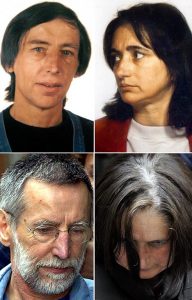
It came days after Fourniret and Olivier were committed for trial. Dark says the first results from low-copy-number analysis could be had within weeks of the evidence arriving in Britain, expected later this month. “We’re very hopeful of getting something that identifies the offender,” Dark commented from his laboratory in Chepstow, Monmouthshire. If DNA from Fourniret or Olivier was found, it would be unthinkable that their trial would not be delayed to include charges for Joanna’s murder. But now there are fears that some of the evidence, scattered across several locations in France, may be lost. “I understand that the French cannot account for the most crucial exhibits – the 1993 slide of semen and the scrapings found under Jo’s fingernails,” said Roger Parrish. “In the interests of retaining my sanity, I am hoping that cannot be true.” Kinsella refuses to comment on the state of the evidence or the handling of the case across the Channel. “We are very pleased to assist the French,” he said. “There are no foregone conclusions; the single important thing is to deliver justice to Joanna’s family.” Despite the circumstantial evidence stacked against Michel Fourniret, Joanna’s parents are only too aware that another surprise may be waiting. “We’re ready for that, the truth is all we want,” Mr Parrish says. He and Sewell believe this is the greatest opportunity since 1990 of solving their daughter’s murder. By all accounts, it is also the last.
Michel Fourniret was sentenced to life in prison on May 28, 2008. The Ogress received the same.
Michel Fourniret died on May 10, 2021, at the age of 79, after being admitted into the hospital with respiratory problems.

Source: independent.co.uk | crimeandinvestigation.co.uk | bbc.com | murderpedia.org | wikipedia
This site contains affiliate links. We may, at no cost to you, receive a commission for purchases made through these links
WickedWe Suggests:





























































